REPORTAGE: Why you should go to the 24 Hours of Le Mans once in a lifetime
24 Hours of Le Mans
In early May, an invitation from Peugeot Netherlands dropped on our digital doormat. Whether we have ever been to the 24 Hours of Le Mans? No, come on! For three days, from Friday, June 14 to Sunday, June 16, we immersed ourselves in the racing violence of Le Mans.
Peugeot 9X8
The Peugeot team has the 9X8 back on the grid, with this year’s drivers including Stoffel Vandoorne, Jean-Éric Vergne and Paul di Resta behind the wheel. On Wednesday is qualifying, followed by the Hyperpole where teams fight for the coveted starting positions. Porsche set the best time and got to start the race up front, followed by Cadillac and Ferrari.
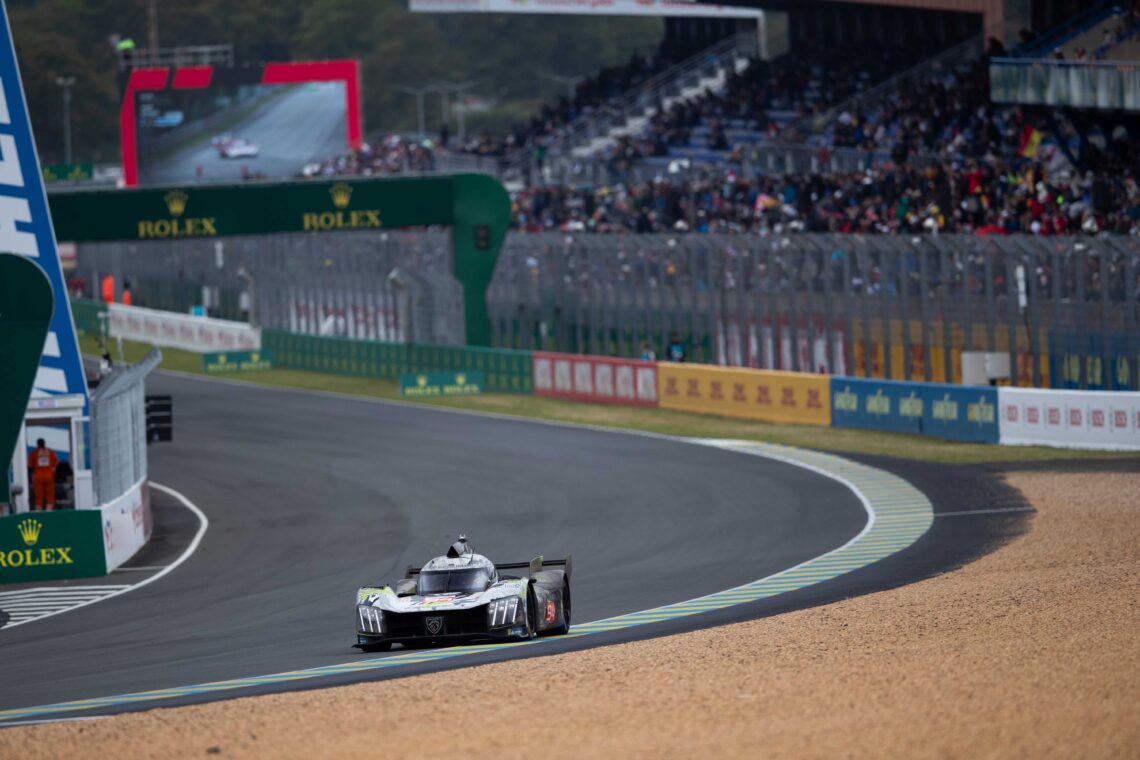
Driver Parade
But before the race weekend begins, all the drivers will first be introduced to the public in downtown Le Mans on Friday. Thousands of fans stand behind barricades as the drivers in classics – with the occasional modern supercar in between – show themselves to the crowd. It almost looks like the inauguration of a soccer team that won the World Cup.

Festival atmosphere
While the drivers go to bed early on Friday, the fans can go wild on the track grounds. Compare it to a huge music festival like Lowlands or Pinkpop, but cheaper. For 100 euros you already have a ticket for the whole week. Exactly, not just for the weekend, but the whole week. A coke will cost you 2.50 and for 6 euros you will have a baguette. Camping? Two tens. Hardcore racing fans, however, have enough with a folding chair and a sleeping bag. And earplugs. Want to go a little more upscale? For 600 euros you will walk along during the Gridwalk and have access to the Paddock. Just put a “0” after that if you want that access during an F1 race.
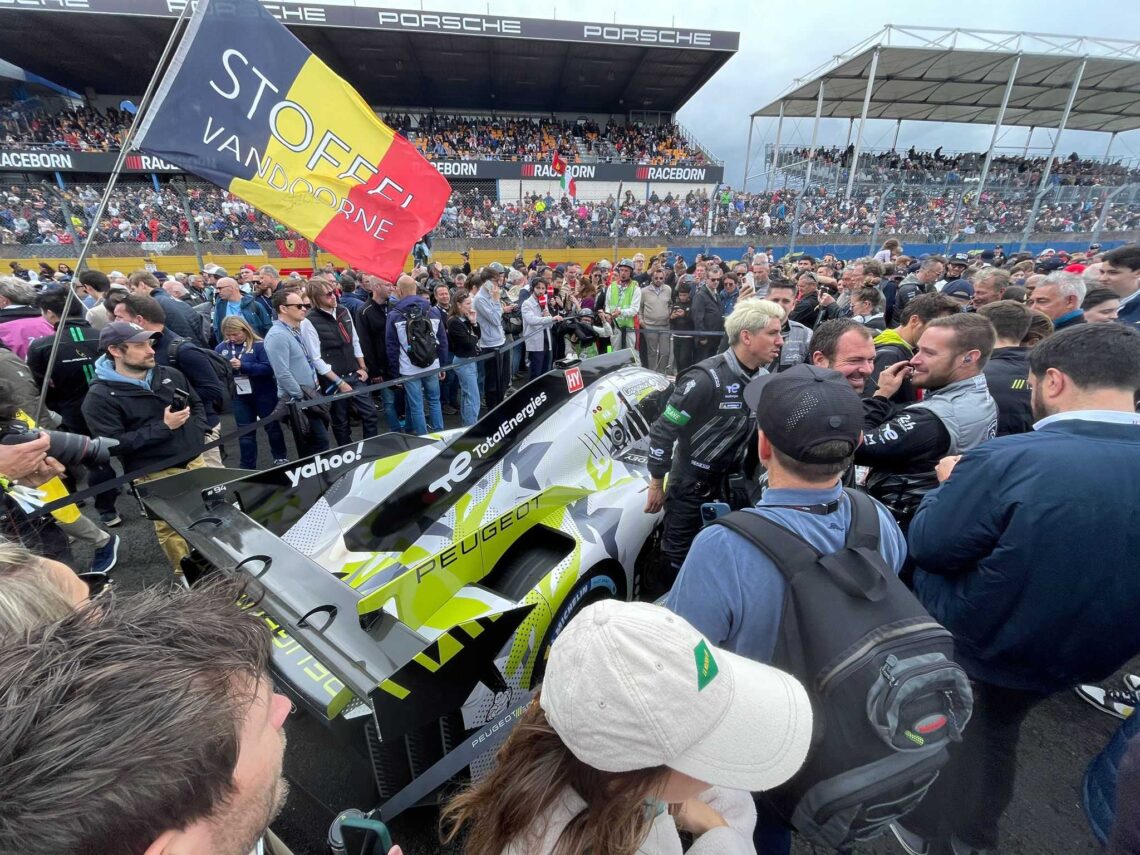
The race begins
Around midnight, we dive into our bed, as we still have 48 hours to go. Saturday morning at 10:00 a.m. we will be back at the track. Various racing classes will provide entertainment, and at noon, race participants may warm up their engines and perform final checks on the track.
The atmosphere on race day is a world of difference from an F1 race. It is looser, more sociable and sometimes delightfully chaotic. You can go anywhere you want without being hindered by hundreds of stewards trying to keep a tight rein on everything. Everything just runs by itself. The rules also seem a bit more lenient on the track. The race is tough, so the organization occasionally turns a blind eye. A good example is the Jota team, which wrecked their car during the last free practice. The team was allowed to completely rebuild their car. They had twelve hours and then they were given permission to test the car at the airport next to the track, among the private jets of the wealthy. Unthinkable in Formula 1.

Zidane
At 4 p.m., French soccer legend Zinédine Zidane waves the flag and the race is on. Porsche starts from pole position with Cadillac behind, but soon they are overtaken by the fast Ferraris. The earplugs we brought? Worth gold! Last year at Zandvoort at the F1 race, they were mostly gathering dust (and sand), but here at Le Mans they are indispensable. The deep growls, roars and roars go straight through your soul. After a few hours along the track, it feels like we have suffered a ruptured spleen, perforated bowel and ruptured eardrum. What violence! And it’s not just the Hypercars that provide a bucket of noise. The Mustang in the GT3 class occasionally produces a big bang that even Thor’s hammer would envy. The best bangs? These come from the exhaust of the Peugeot 9X8. Like he’s firing cannonballs! Carbide shooting is nothing like it. The best soundtrack, however, comes from Cadillac Racing’s hypercar, the only one with an unblown V8 (5.5-liter).
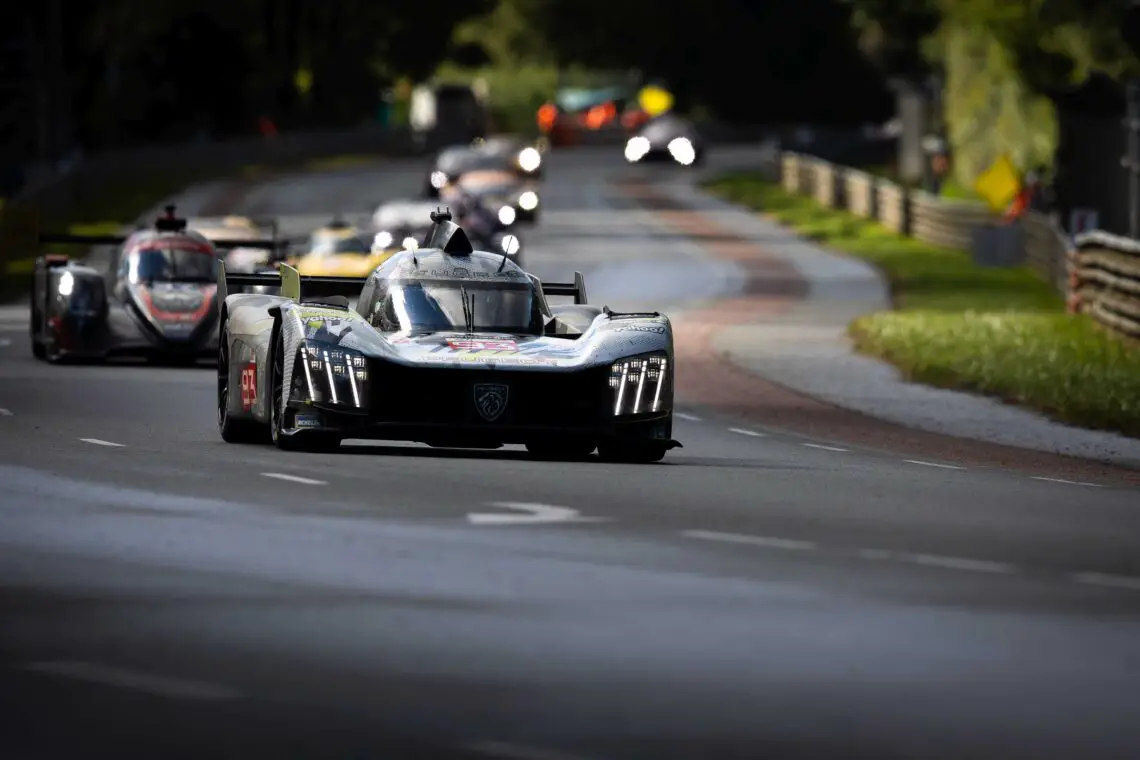
The Night
Five o’clock in the race and it’s starting to dusk. Two hours later, it is dark. For many fans, this is the most beautiful moment: the night. The track is barely lit in many places, making for a magical sight with the lights of the race cars racing by at 300 mph. The Peugeot 9X8 in particular stands out with its brightly lit “lion claws.” This is in contrast to the cars of Ferrari, Cadillac, Porsche and Alpine, which are almost indistinguishable in the dark until you see their illuminated starting numbers. The French bolide is the only one you can see coming in the dark from a mile away, thanks to the distinctive light signature that Peugeot also uses on their regular passenger cars. Six brightly lit lion claw stripes adorn the front and rear of the car.
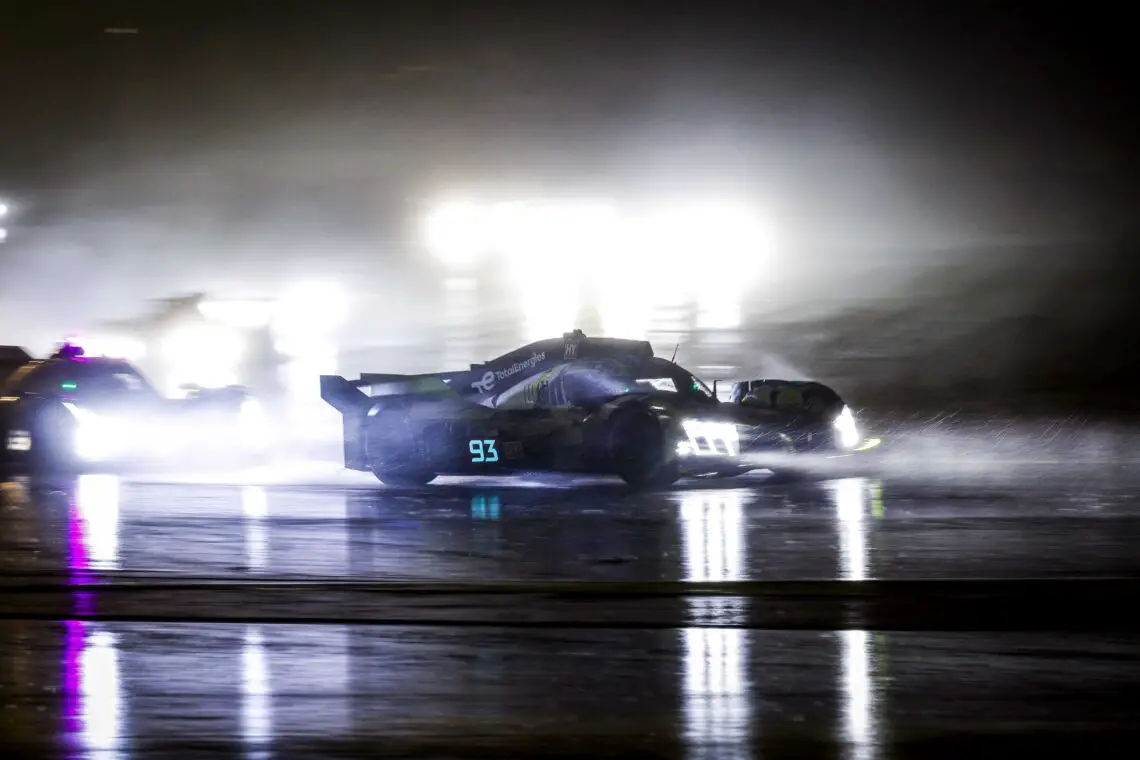
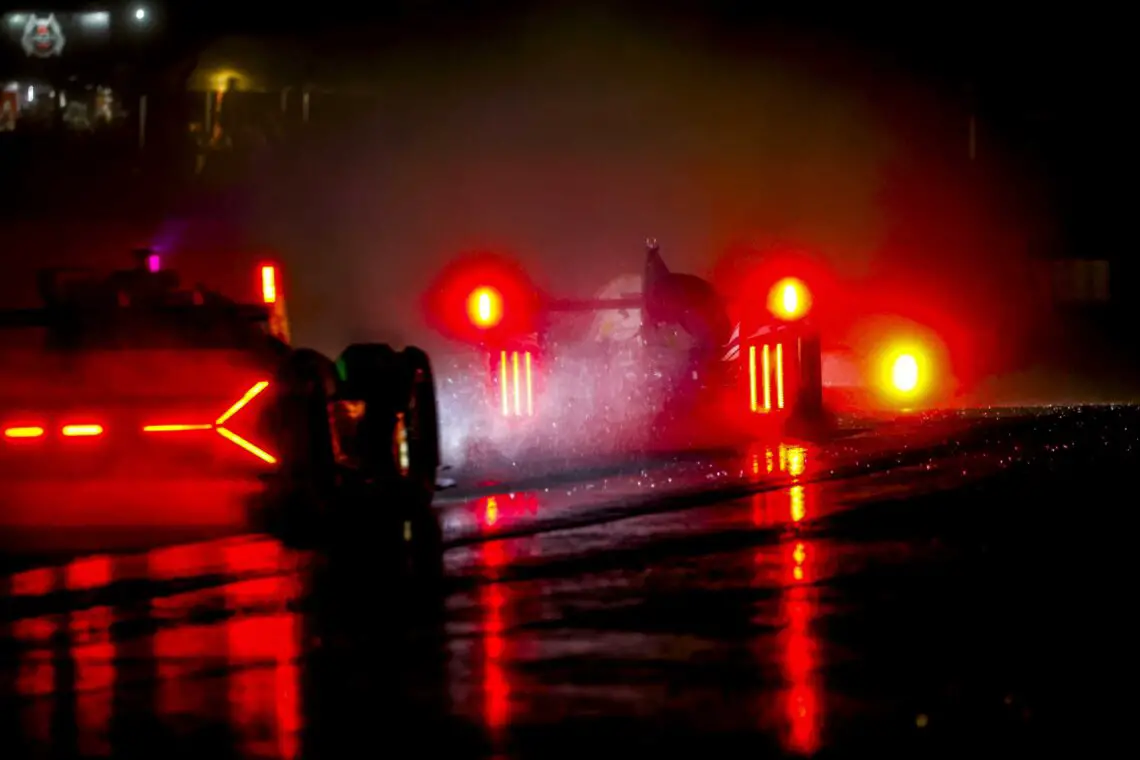
Hardcore fans
The night seems endless. The rain just won’t stop and the safety car stays on the track for hours. Around four o’clock, night slowly gives way to morning and the rain stops. Several cars – and sometimes entire teams – have since dropped out due to problems or slides. The die-hard fans sit in their sleeping bags on a chair along the long straight, while others still hang out in the fan zone and sing along at the top of their voices to the current French summer hit.
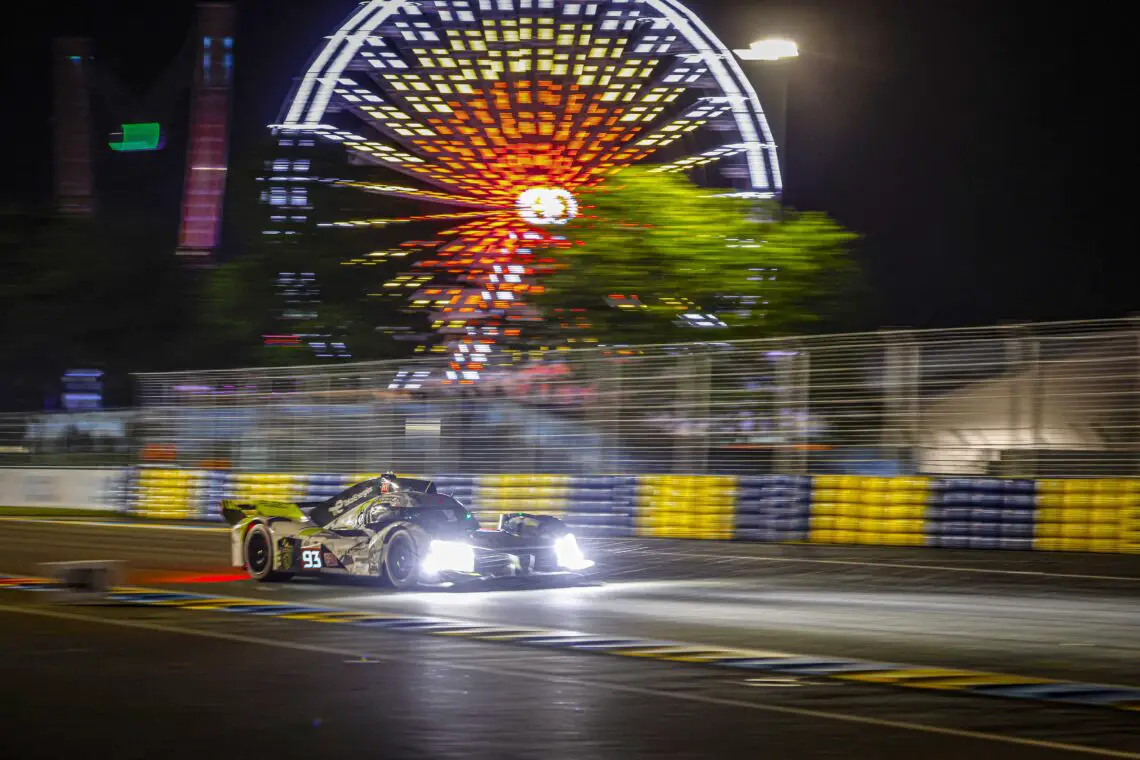
We grab some hours of sleep at the hotel and are back at the track at 9 a.m. on Sunday, refreshed. Not much later, we got to take a look inside Peugeot’s pit box. We are lucky, car 94 of Peugeot is just coming in for a pit stop. These go differently than in Formula One. Verstappen gets by on one tank of gas, but a 24-hour race obviously requires frequent refueling. In 24 hours, the cars travel some 5,000 kilometers. That’s like driving from Amsterdam to Athens and back again. In one twenty-four hour period. In addition, the car – especially the windshield – gets a thorough polish, new rubber is put under it and the drivers change every few hours. Each car has three drivers, bringing the total to 186.
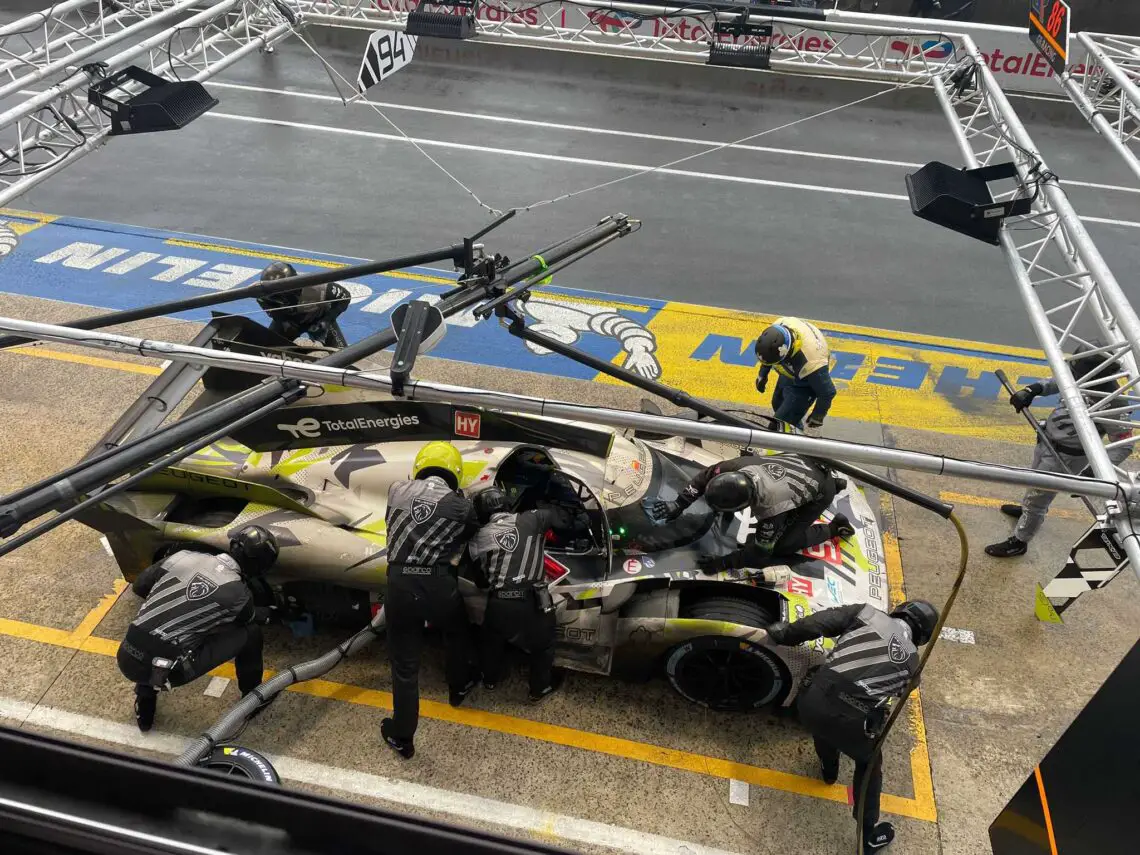
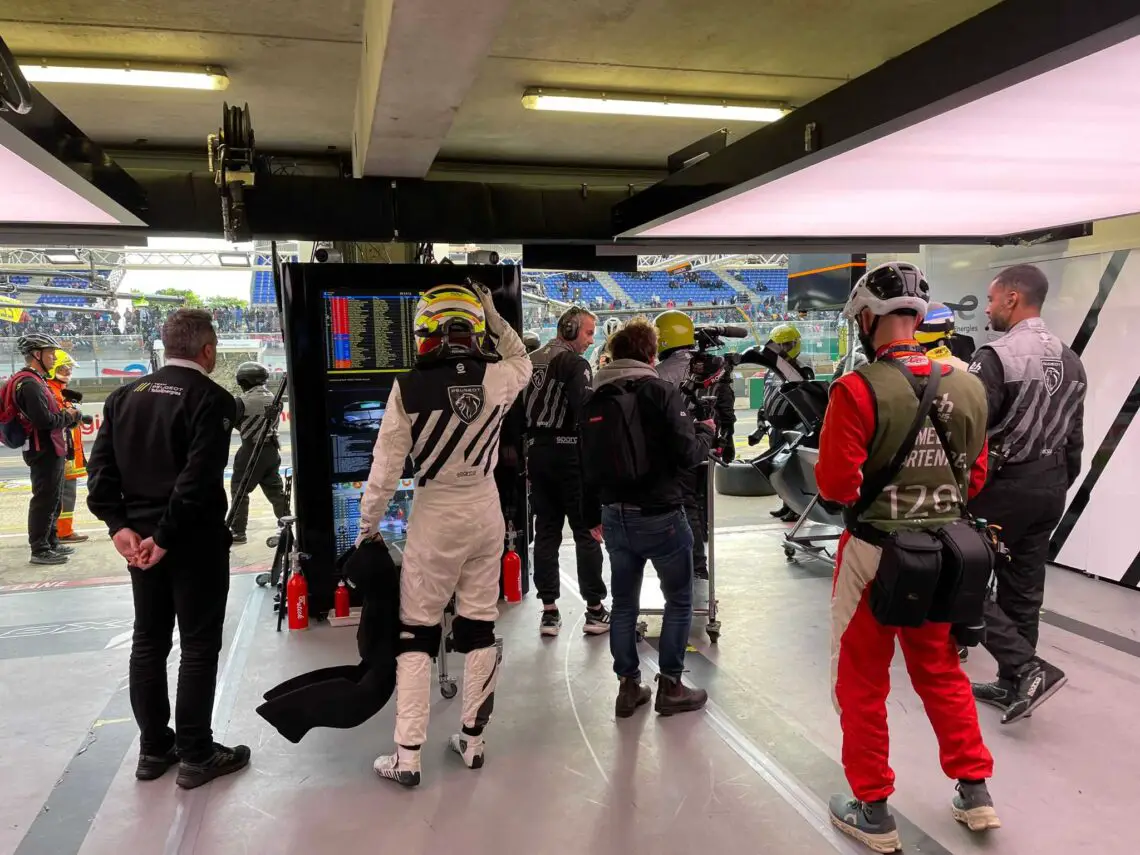
Win for Ferrari
In the final hours, Ferrari, Cadillac, Toyota and Porsche fight for victory, followed by teams such as Jota, Lamborghini and Peugeot. In the end, Ferrari – with a nearly empty tank and running on gasoline fumes – crossed the finish line first. The Italians narrowly manage to leave behind the Toyota of Nyck de Vries. Still, there is a Dutchman on the top step of the podium: Dutchman Morris Schuring recorded an impressive victory in the LMGT3 class with his Manthey Porsche.
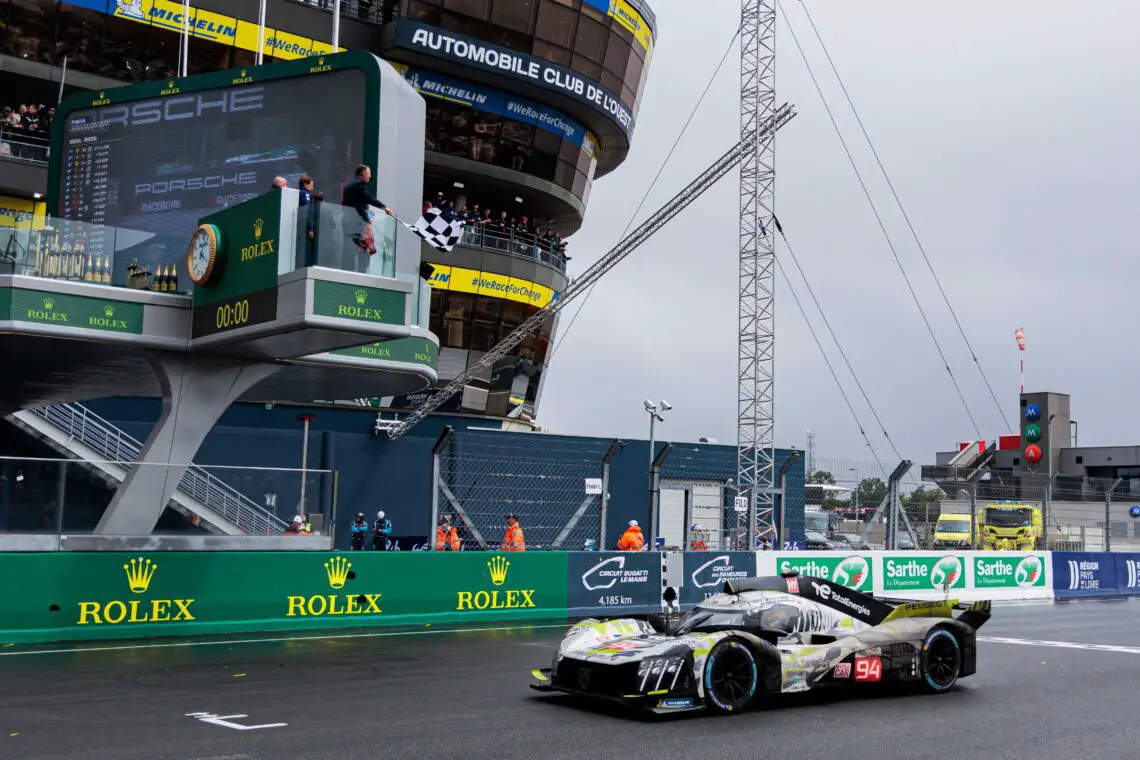

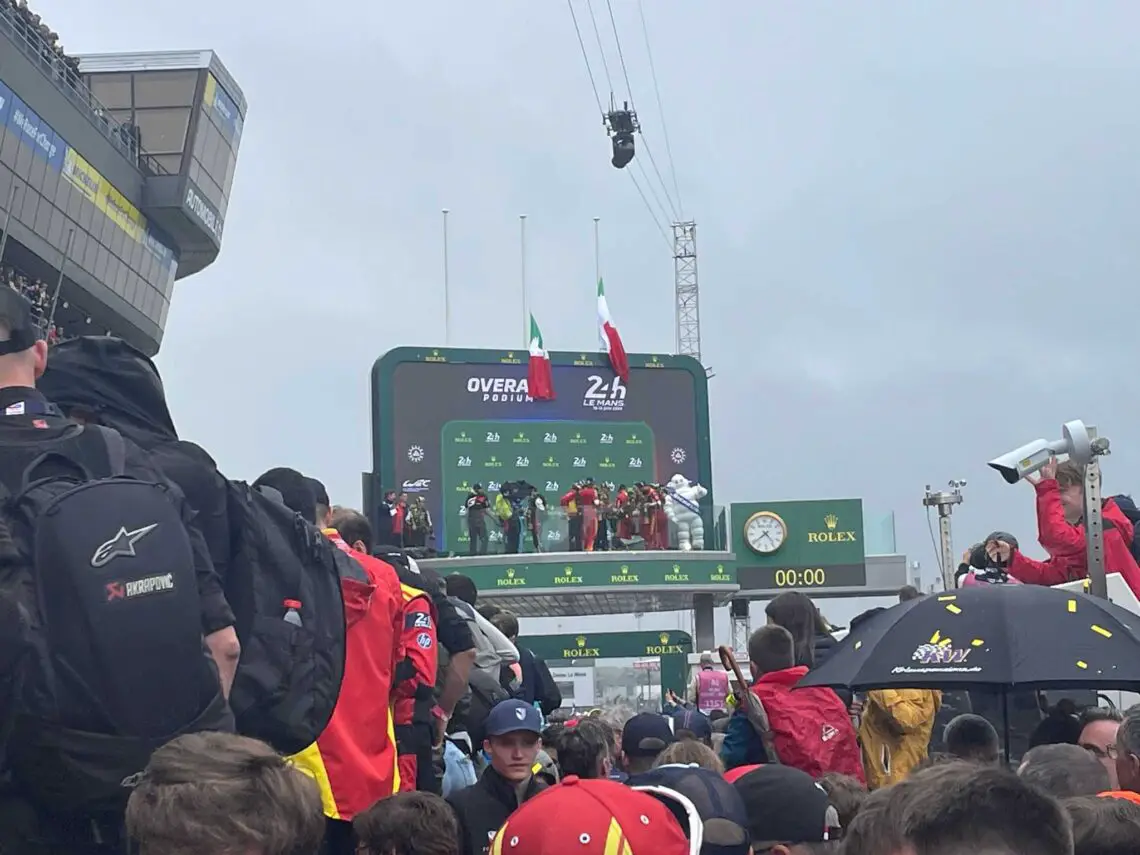
Conclusion
For the sound alone, you MUST attend the 24 Hours of Le Mans once in your life. We said it above: it cuts through the marrow. The 24 Hours of Le Mans is a world event, and you can tell by the crowd. Germans, Brits (lots of Brits), Poles, Austrians, Americans (lots of Americans) and of course French are all there in large numbers and make for a great atmosphere. Dutch people, who normally like to be on the front row for a dime, are remarkably scarce here. But that is sure to change, once Verstappen takes part in the race at Circuit de la Sarthe. And once that happens, Le Mans will undoubtedly become one big orange carnival and there will probably be more Dutch than French in attendance. Whether that makes the event more fun, we leave to you. But do you want to experience the real, still “undiscovered” 24 Hours of Le Mans, without the Dutch invasion? Then be quick and score your tickets for 2025.
And don’t forget your earplugs.
Also read: How the Peugeot 9X8 didn’t win Le Mans, but still scored big points

